A recent article in the South China Morning Post declared that chemistry in the US and Europe seemed to be dying, while China was forging ahead. It noted that Chinese universities were now monopolising the top 20 spots for chemistry in the Nature Index, a global indicator of high-quality research output. Meanwhile, western institutions face cutbacks and closures, as China appears to be cementing its dominance. But is chemistry really dying a slow death in Europe and the US?

The Nature Index tracks contributions to research articles published in 145 journals, chosen by a panel of researchers. Users can track an institution’s output and compare it with others by country, region and sector across chemistry, biology, earth and environmental sciences, health sciences and physical sciences.
China accounts for 44 of the top 50 institutions for chemistry in the latest index based on 2024 data. The Chinese Academy of Sciences, University of Science and Technology of China and the University of the Chinese Academy of Sciences take the top three positions. Europe has only three in the top 50: Germany’s Max Planck Society at 13 (down from 10 in 2023), the French National Centre for Scientific Research at 18 (13) and the Helmholtz Association of German Research Centres at 27 (22). The highest-ranking US institution is the Massachusetts Institute of Technology at 33 (23). Only two UK universities make the top 50: Oxford at 35 (31) and Cambridge at 40 (38).
So how significant are the index’s findings?
Xiaotian Chen, electronic services librarian at Bradley University, Illinois, points out that the index is based on a small collection of journals, and the proportion of SpringerNature journals is a lot higher than other major publishers. Many key chemistry journals, including 80% of the top 10 in the Scientific Journals Ranking are not included, such as Chemical Reviews, Nano Research Energy and Chemical Society Reviews. What’s more, many universities in China offer substantial monetary rewards to authors who publish in Nature Index journals to boost rankings, he says. This doesn’t happen in the US.
We haven’t seen many true breakthroughs coming out of Chinese chemistry labs as much research there is still derivative
Cong Cao, Nottingham University in Ningbo
Cong Cao, an expert in Chinese science, technology and innovation at Nottingham University in Ningbo, China, agrees that other factors are at play in China’s dominance of the index. ‘The large volume of Chinese papers in international journals is partly due to the large number of chemistry students in China who must meet key performance indicators to graduate,’ he says. ‘We haven’t seen many true breakthroughs coming out of Chinese chemistry labs as much research [in the country] is still derivative. If citations mean something, we haven’t seen Chinese chemists dominate Clarivate’s list of Nobel predictions.’
A more complex picture
Global chemistry research is more nuanced than the index reveals, says Caroline Wagner, a science policy expert at Ohio State University. Chinese scholars, without counting international collaborations, do publish significantly more articles than their US counterparts. According to Scopus, in 2023 they published about 45,000 articles compared with 8000 from the US. ‘But the US articles had a higher impact,’ she points out. ‘Moreover, Chinese journals have a very high self-citation rate – three times as high as the US – which some critics say is “citation stacking” or gaming of citations to improve on a measure of impact. Even so … the US’s articles were more likely to appear in the top 10% most highly cited works than the Chinese articles in 2023. About 20% of Chinese articles in chemistry are written with international co-authors, mostly from the US. These works are likely to be more highly cited than the works of either country alone.’
Is it the case then that Chinese institutions dominate some global rankings because they publish huge numbers of articles?
Guillermo Restrepo, a mathematical chemist at the Max Planck Institute for Mathematics in the Sciences, doesn’t think so. ‘Chinese research groups produce a large volume of work, spanning a wide range of scientific quality,’ he notes. ‘However, over time, an increasing number of influential papers feature Chinese authors. It’s not merely a matter of quantity. If it were, their work would not be gaining visibility or reshaping the scientific landscape. Science cannot be transformed by millions of low-quality papers; true change comes from high-level, groundbreaking research – and this is precisely what is happening in China.’
He argues that the index is a reasonable indicator of the chemistry landscape. ‘Despite its inherent subjectivities, the index produces somewhat reliable results, as the skewed nature of scientific impact allows a single – yet important – factor to serve as a reasonable indicator.’
However, other rankings don’t show such a stark skew towards Chinese chemistry. The QS Top Universities Ranking, for example, puts Harvard University, the Massachusetts Institute of Technology and the University of Cambridge in the top three, while China has only three universities in the top 20. Unlike the Nature Index, it considers several factors such as reputation, degree of international collaboration and citations. The Times Higher Education World University Rankings 2025 paints a similar picture to the QS Ranking with the top 10 in the physical sciences still dominated by US and UK institutions.
Steps could be taken to improve the situation for western chemistry, but this would require investment and strong economies
Guillermo Restrepo, Max Planck Institute for Mathematics in the Sciences
But Restrepo doubts the value of some of these other rankings. ‘China has achieved its current dominant position with relatively little international collaboration, at least in relation to the discovery of new chemicals,’ he points out. ‘Over the past 30 years, the discovery of new chemicals by Chinese teams has been primarily driven by domestic efforts. In contrast, the US increasingly relies on international collaboration – particularly with China – while its contributions to chemical discovery are steadily declining.’
Recent research by Restrepo finds that China accounted for 41% of the new substances discovered in chemical space in 2022, which spans all chemicals and reactions reported in the literature, dwarfing the US’s 11%. While China’s share grew exponentially between 1996 and 2022, US participation rose modestly until 2007 and then dropped rapidly. In 2013, China became the overall leading contributor of new compounds. The only other country whose share was systematically increasing is India, but its growth is modest compared with that of China. The study also found that China is the leading contributor to organic chemistry and rare-earth chemistry.
Overall, Restrepo says that chemistry’s health in Europe and the US is in a bad way. ‘Steps could be taken to improve the situation for western chemistry, but this would require investment and strong economies – neither of which Europe nor the US are prioritising. In contrast, China continues to invest in science and chemistry, and its economy is thriving. However, claiming that US chemistry is dying is an exaggeration. It is in a difficult position, and the situation is expected to worsen given the current political and economic climate, but it is still far from its grave.’



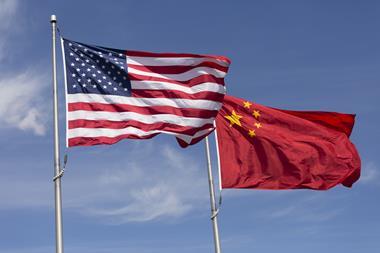
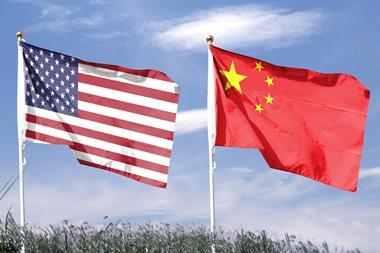


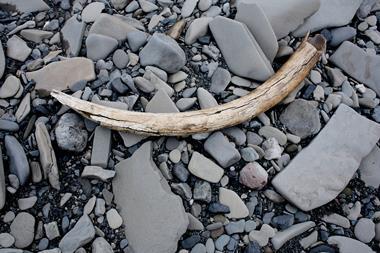
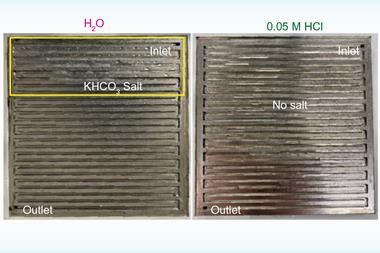

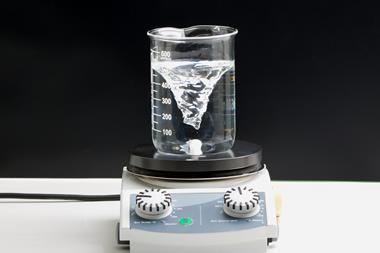

No comments yet